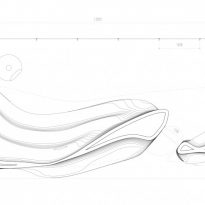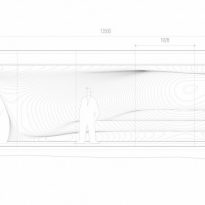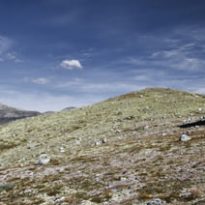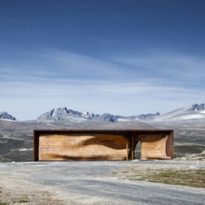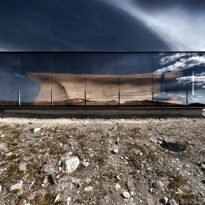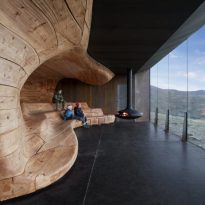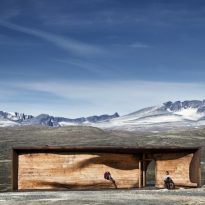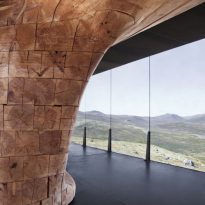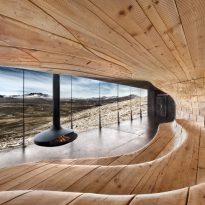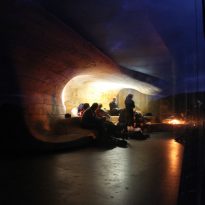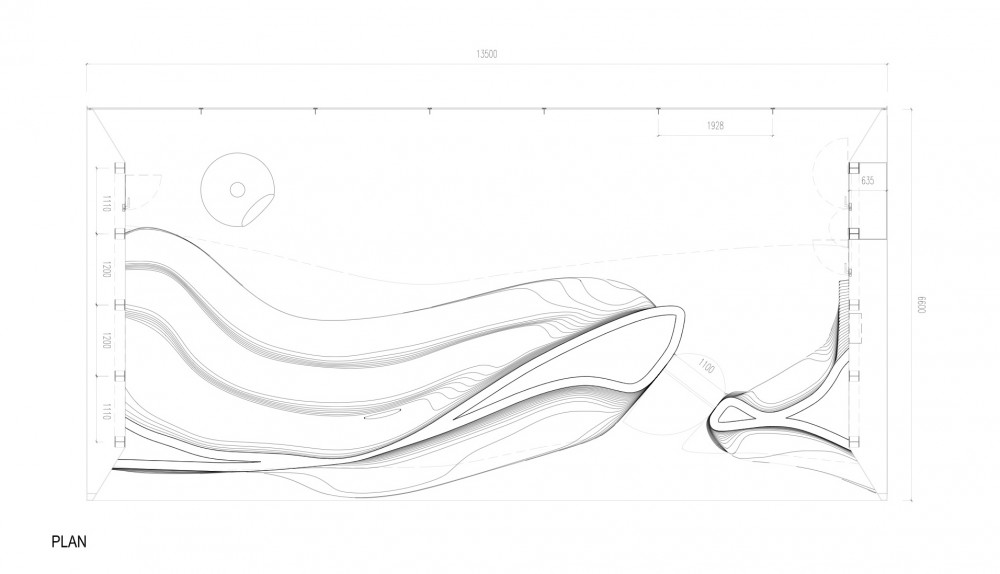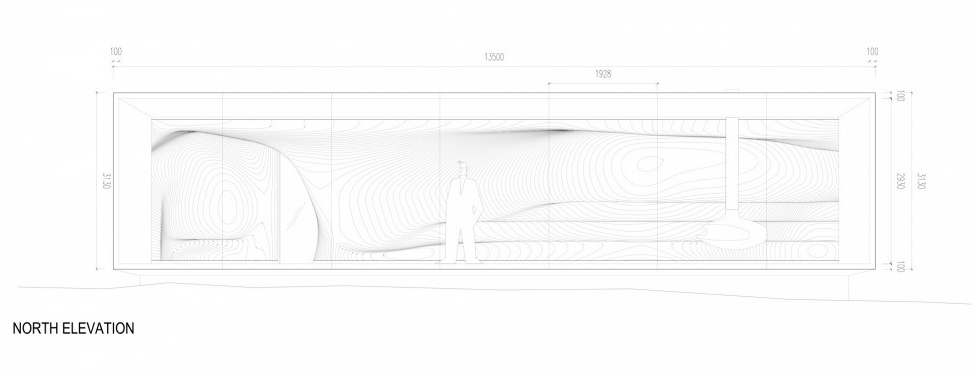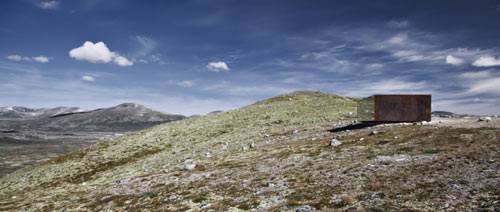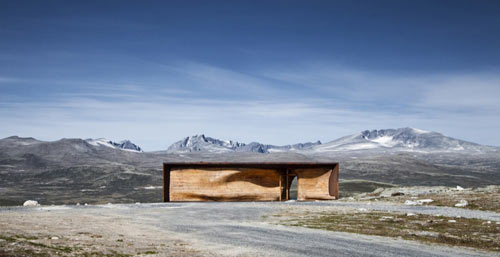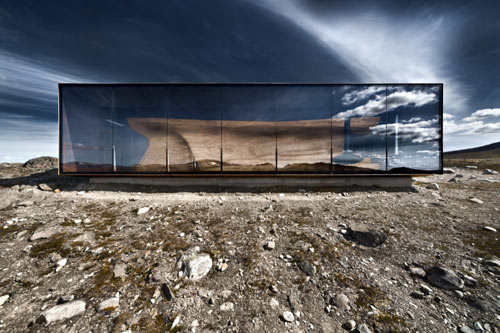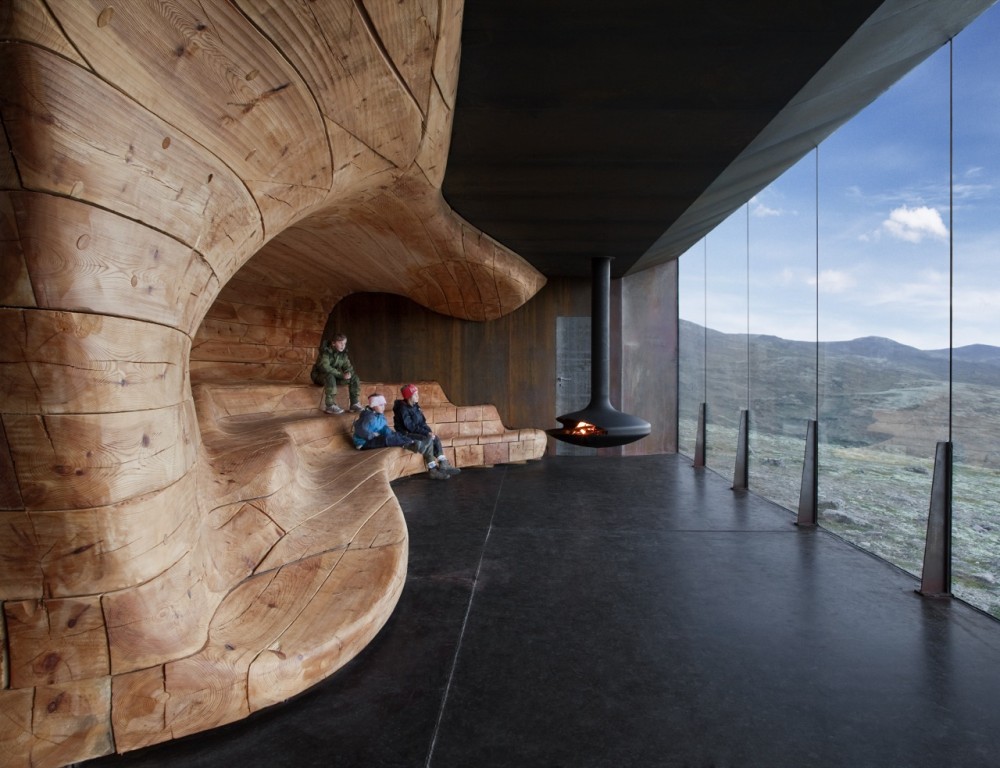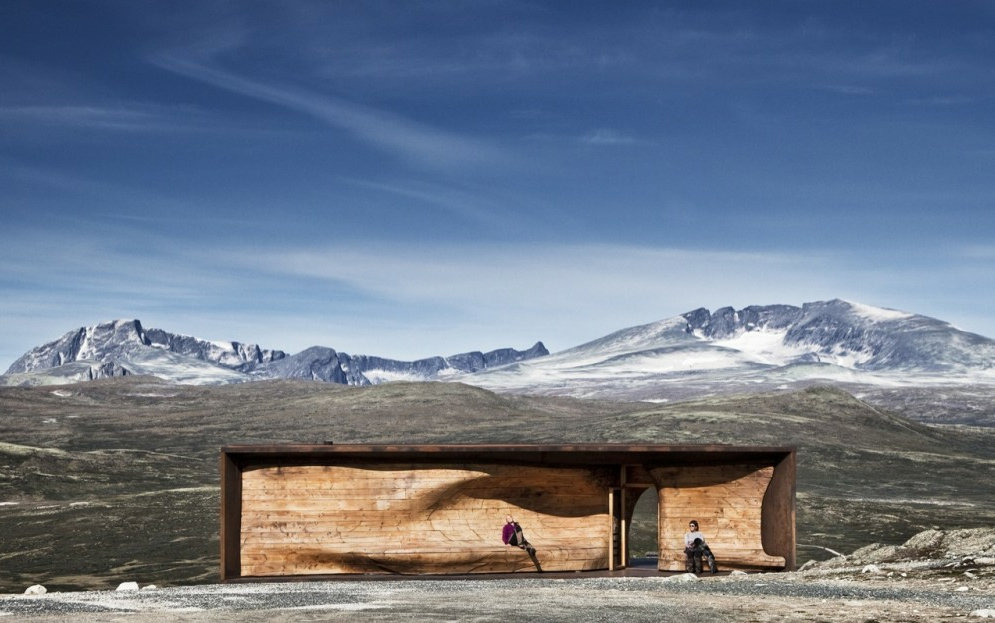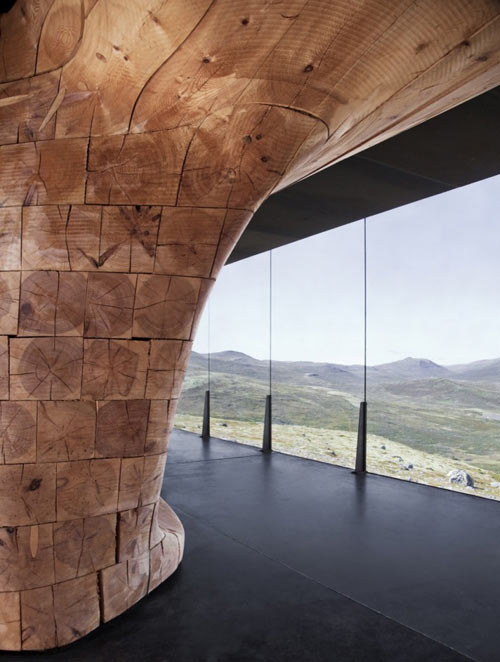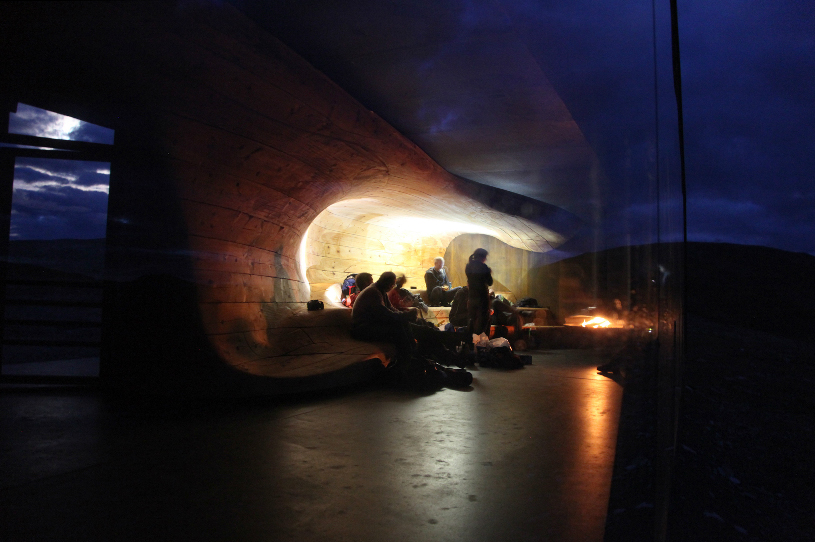Tverrfjellhytta Pavilion

Introduction
This particular observation pavilion belongs to the Norwegian Wild Reindeer Centre (Norsk Villreinsenter), but is better known by the name Tverrfjellhytta. Built by Snøhetta study of Oslo, also allows the public to enjoy the programs offered by the Foundation Norwegian Wild Reindeer, giving shelter to groups of students and visitors interested in the program. He has been awarded the Cultural Building of the Year 2011 award for ArchDaily.
Situation
This small building in the middle of a great landscape was raised in Dovre, Norway, municipality of Hjerkinn located outside the National Park Dovrefjell, at 1250 meters above sea level, overlooking the Massif Snøhetta, whose mountains has taken the name Norwegian firm.
Concept
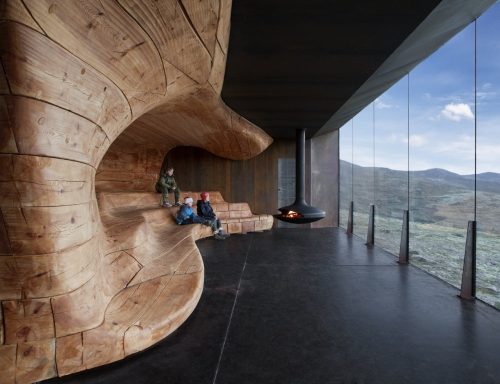
The natural, cultural and mythical landscape form the basis of the architectural idea.
The building design is based on the contrast between a rigid outer shell and a soft and delicate inner heart.
The architects of Snøhetta study sought to test the outer structural steel and glass box, with organic curves that mimic wood interior erosion of rock or ice, caused by natural forces, such as wind or water, and they offer in this place a unique viewpoint to sit and observe nature around them.
With this design a comfortable and durable for visitors to enjoy the area and learn to know space is created.
Target
The main objective of these 75m2 construction, is to provide shelter for groups of students and visitors interested in learning the wonder of wildlife in the area and the history of the Dovre Mountains.
Materials

The main materials used in construction are steel, wood and glass.
It was necessary to place special emphasis on the choice of materials so that they could withstand the onslaught of the harsh climate of the mountains. The simplest form of shelter and the use of natural building materials, continued references to local traditions, combining them with new technologies that allowed a modern efficient delivery of the whole process.
In the woodworking traditional craftsmanship combined with 3D milling by CNC techniques, performed on a large scale by a digitally controlled robot. The core is formed by layers of wood 10 inches thick.
Knut Bjørgum, architect project manager explains:…….. “used a robot to make a model of the building in our offices in Oslo and then send the 3D files to a shipbuilder on the west coast of Norway for its construction. They have hundreds of years of experience in shipbuilding and were the only ones found with woodworking skills this way. The layers were fixed to each other by clamps to acquire the form, and so the whole set was assembled without nails or glue “…
